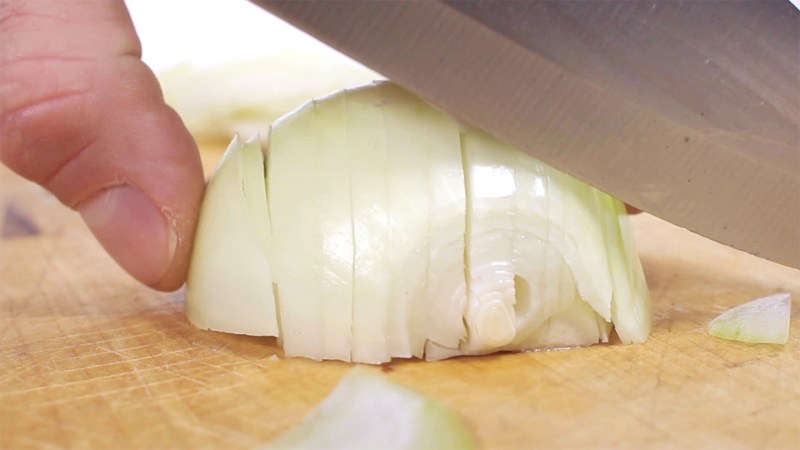
Cutting onions often leads to tears, but new research suggests that using sharper knives can significantly reduce this common kitchen nuisance. A study published in the October 21, 2023 edition of the Proceedings of the National Academy of Sciences reveals that the technique of cutting onions with a sharper blade minimizes the release of tear-inducing droplets that trigger eye irritation.
The culprit behind the tears is a chemical compound known as propanethial S-oxide. When an onion is cut, its cells rupture, leading to a chemical reaction that produces this compound. As the onion is sliced, tiny droplets containing propanethial S-oxide are released into the air, causing a stinging sensation in the eyes.
Navid Hooshanginejad, a physicist at SharkNinja in Needham, Massachusetts, who conducted this research while at Cornell University, noted the significance of this finding. “This is something everybody’s dealing with. Now we can also explain and understand it better fundamentally,” he stated.
The research began when Hooshanginejad was preparing onions for a salad and realized how easily the pungent liquid could escape. Curious about how far these droplets could travel, he brought a 10-pound bag of onions to the lab, equipped with a high-speed camera to document the airborne journey of the droplets as he sliced through the vegetables.
Hooshanginejad and his team constructed a miniature guillotine to improve their understanding of the onion’s internal structure and the dynamics of the liquid released during cutting. They tested knives of varying sharpness, measuring the force and speed of each slice. The results were telling: using dull knives resulted in droplets being ejected nearly 40 meters into the air, almost half the height of a giant sequoia.
In contrast, slicing with sharper blades allowed for a more controlled release of the juice. The careful technique kept the droplets from reaching eye level, significantly reducing the likelihood of tears.
Physicist Jim Wilking from the Mayo Clinic in Rochester, Minnesota, who was not involved in the study, compared the phenomenon to popping a water balloon. “If you pop a water balloon by using a needle, you don’t need to apply much pressure. But if you come in with your finger, you’re essentially pressurizing the elastic shell in order to pop it,” he explained. The added pressure from blunt knives results in a more forceful release of liquid, leading to a greater distance traveled by the droplets.
The implications of this research extend beyond kitchen practices. Understanding how droplets disperse in the air can provide insights into how pathogens spread in various biological systems, as noted by Hooshanginejad. This research could inform not only culinary techniques but also public health approaches in managing the spread of diseases.
In summary, the simple act of using sharper knives when cutting onions can lead to a tear-free experience in the kitchen. This research highlights the intersection of culinary practice and scientific inquiry, unveiling the mechanics behind a common household challenge.






